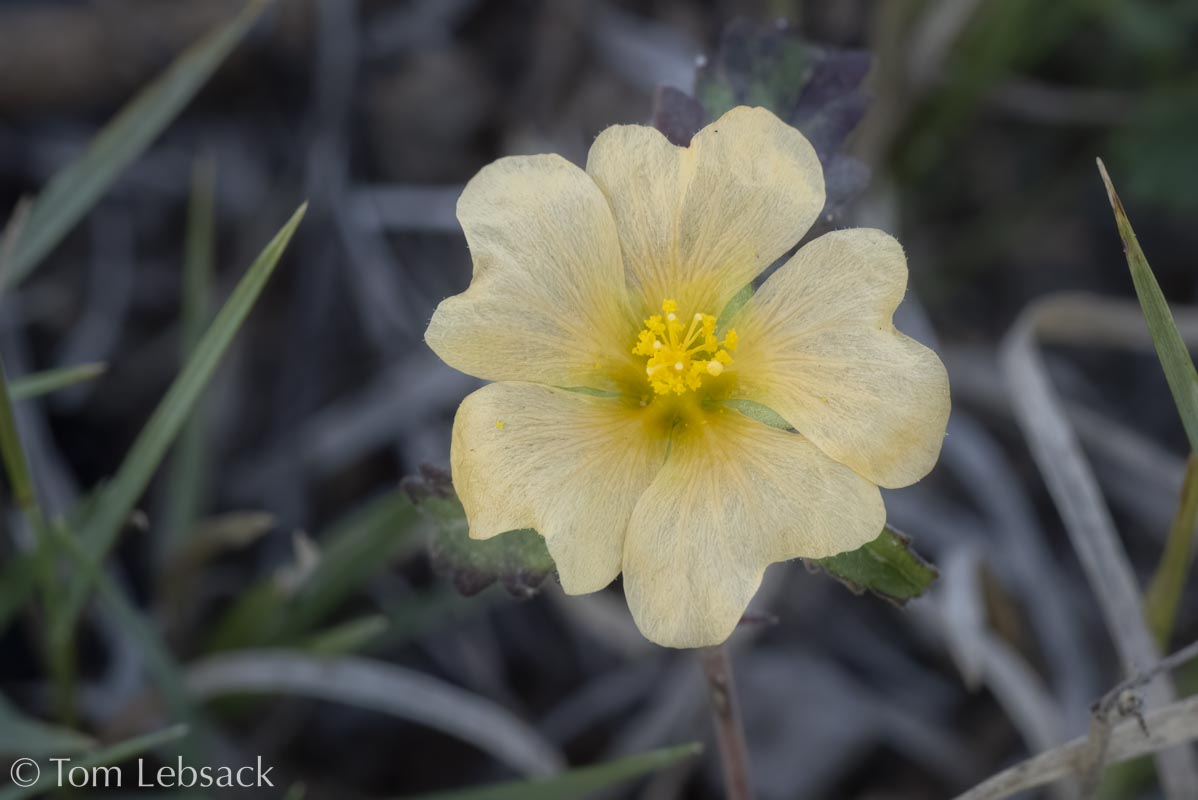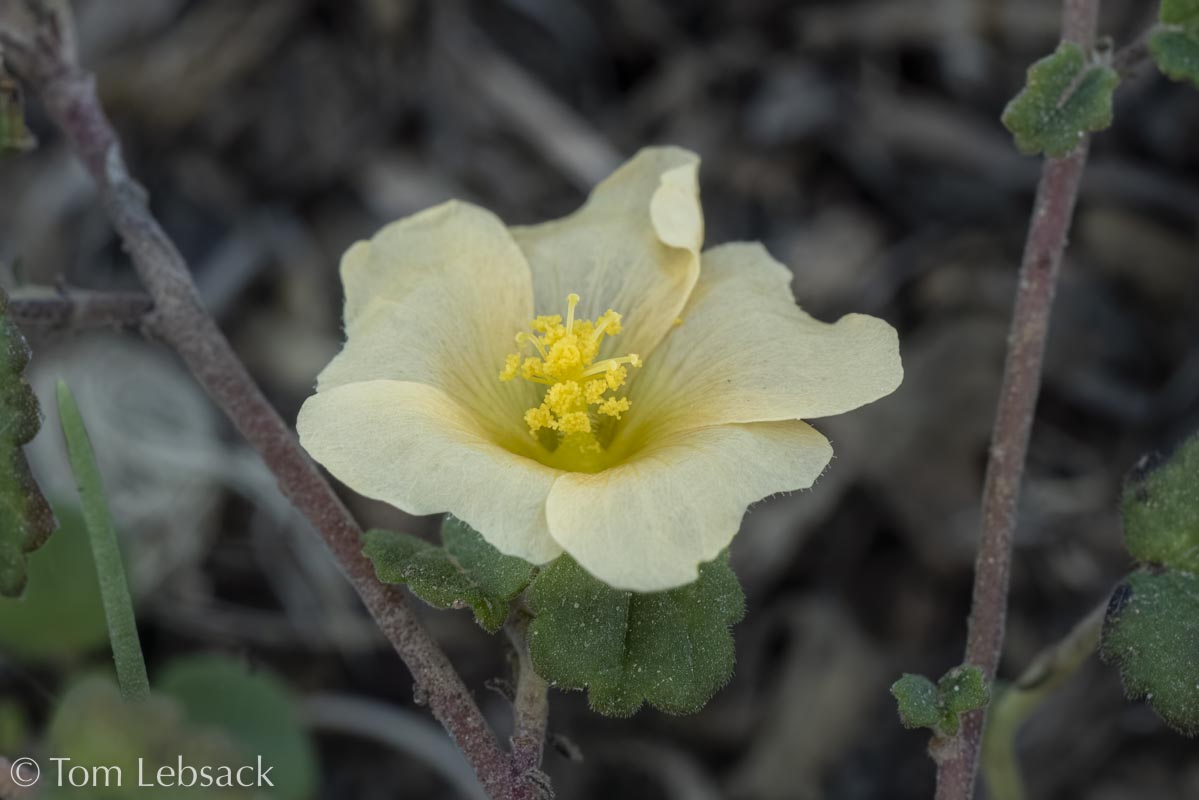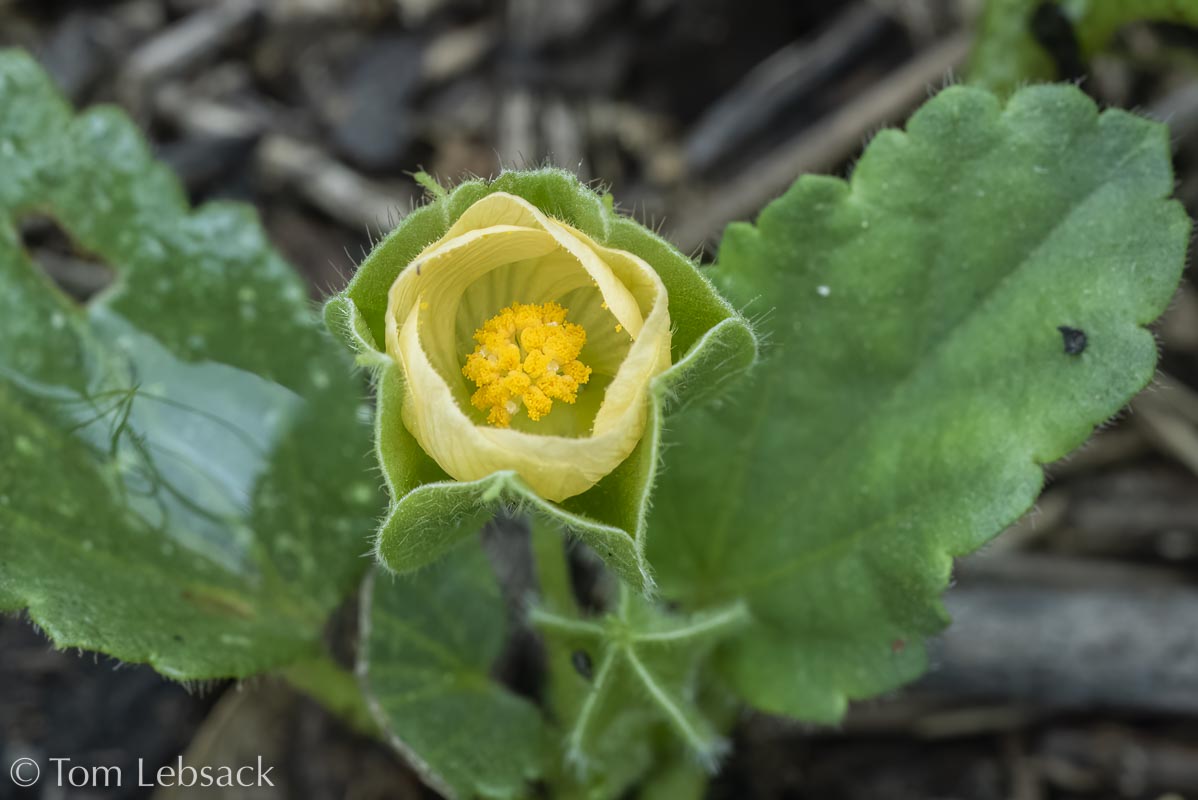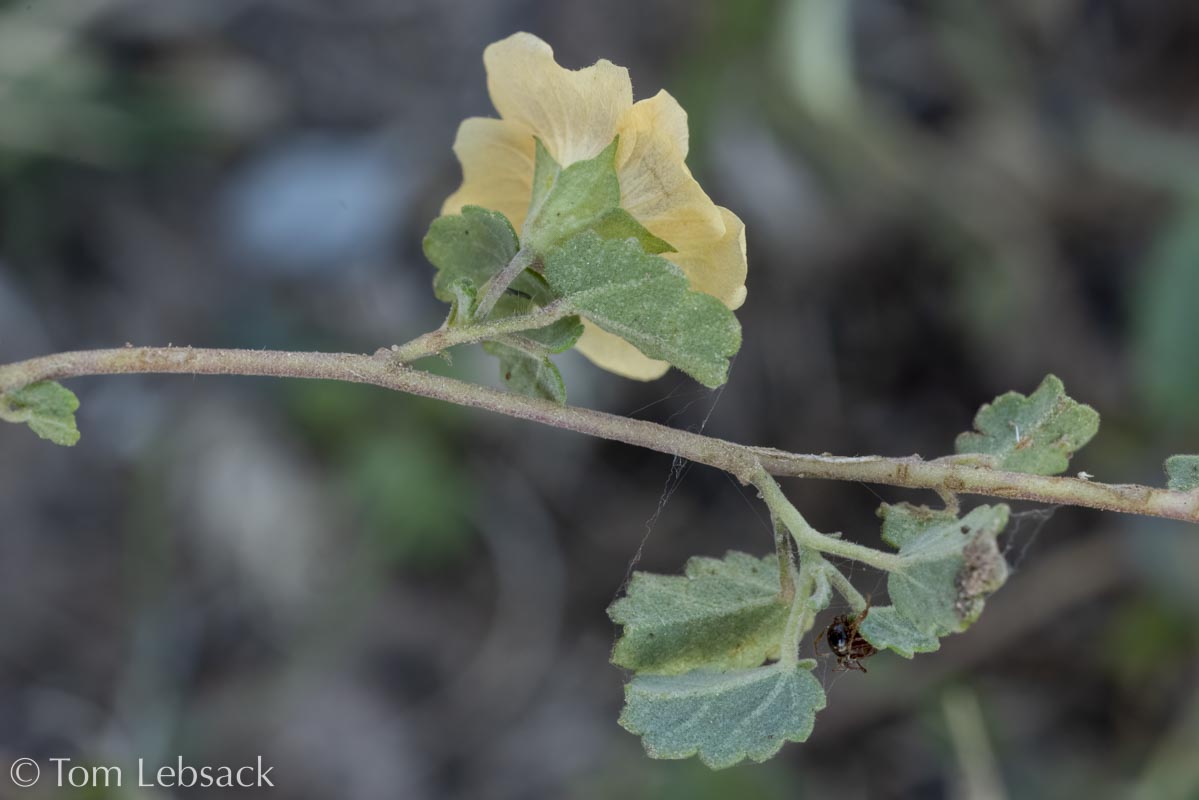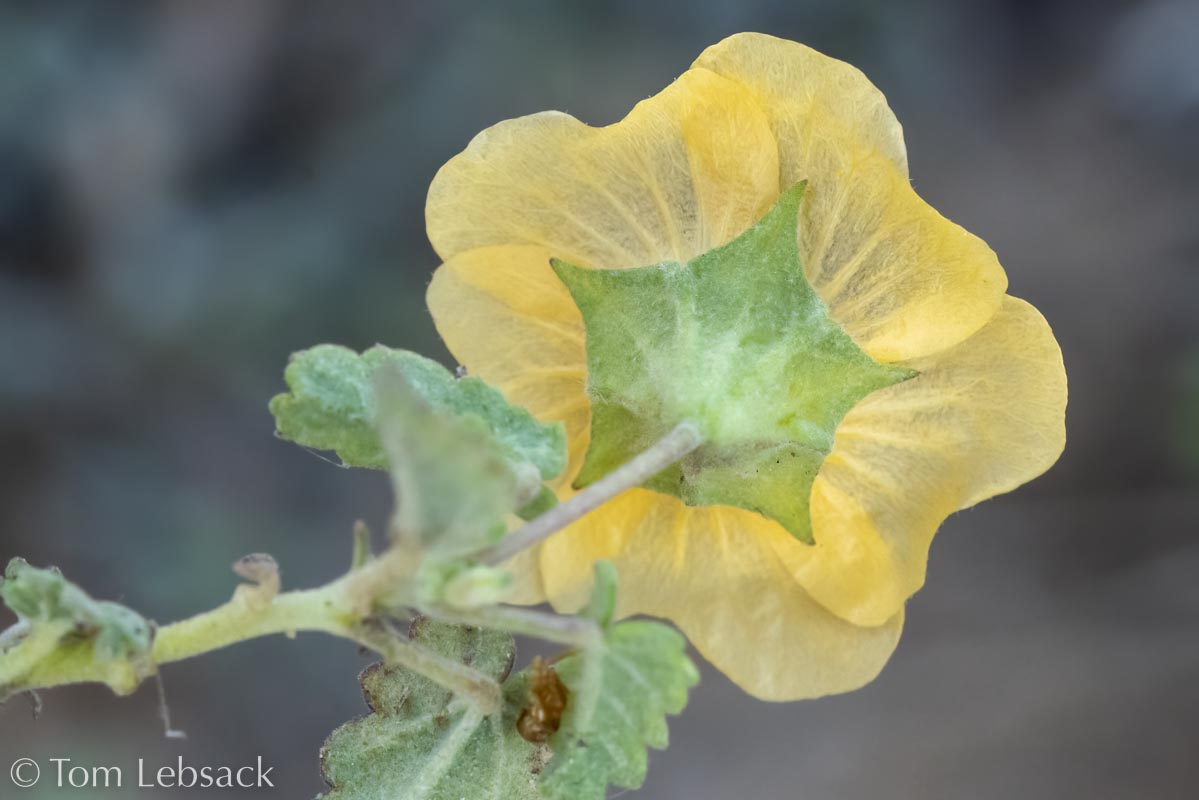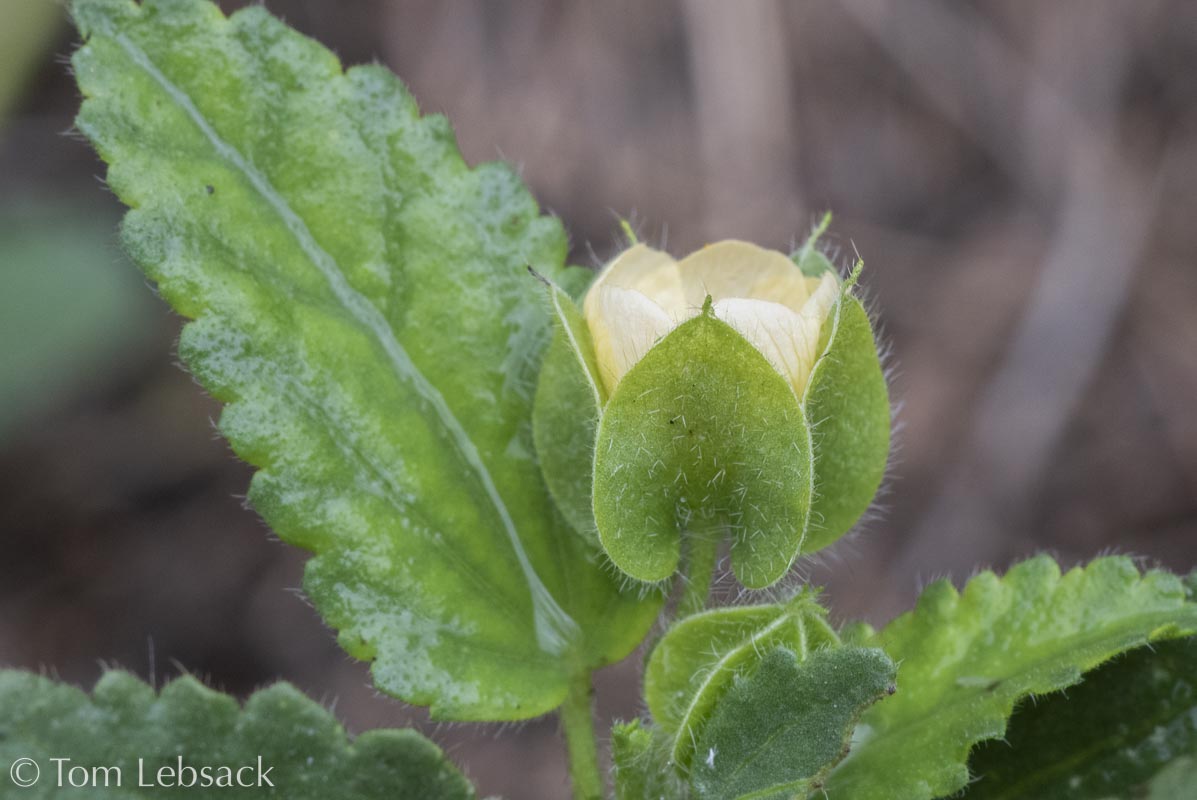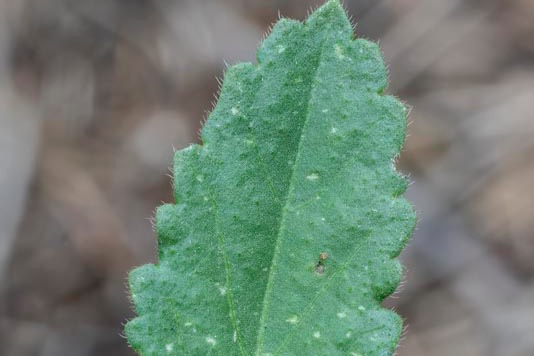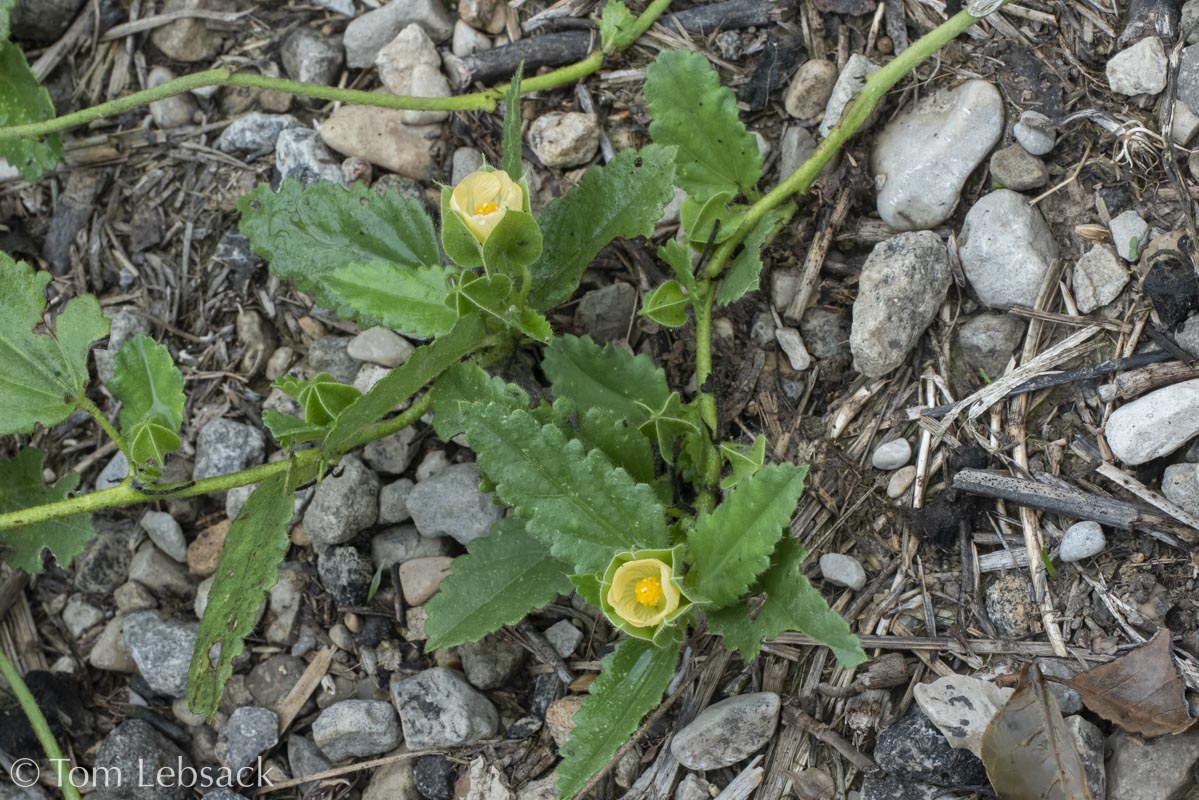Texas Wildbuds
Rhynchosida physocalyx
(Bladderpod Sida)
| Scientific Name | Rhynchosida physocalyx (Sida physocalyx) | USDA PLANTS Symbol | RHPH2 |
| Common Name | Bladderpod sida, Beaked sida | ITIS Taxonomic Serial No. | 504774 |
| Family | Malvaceae (Mallow) | SEINet Reference |
Click Here |
| Description | Habitat: Sandy, gravelly or rock soils in a variety of environments, including prairies, washes, thickets, forests, roadsides and disturbed areas. Plant: Low-growing, spreading perennial with stems up to 16 inches or more long. Leaves: Alternate, oblong-ovate, 3/4 to 2 inches long, on petioles 3/8 to 1-1/2 inches long; with rounded to somewhat pointed tips, surfaces coarsely hairy and crenate or serrate and ciliate margins. Inflorescence: Solitary pale yellow to buff-colored flowers with 5 overlapping petals arising from leaf axils, cup-shaped or spreading to to 1-inch across and barely longer than calyx lobes; column of darker yellow stamens united together in Mallow fashion; pedicels 3/8 to 3/4-inch long. Bloom Period: March to December. Fruits: : Surrounded by inflated calyx, ~1/3-inch in diameter. References: Sida physocalyx in "Manual of the Vascular Plants of Texas" by Correll and Johnston; "Wildflowers of Texas" by Geyata Ajilvsgi and SEINet. |
BONAP Distribution Map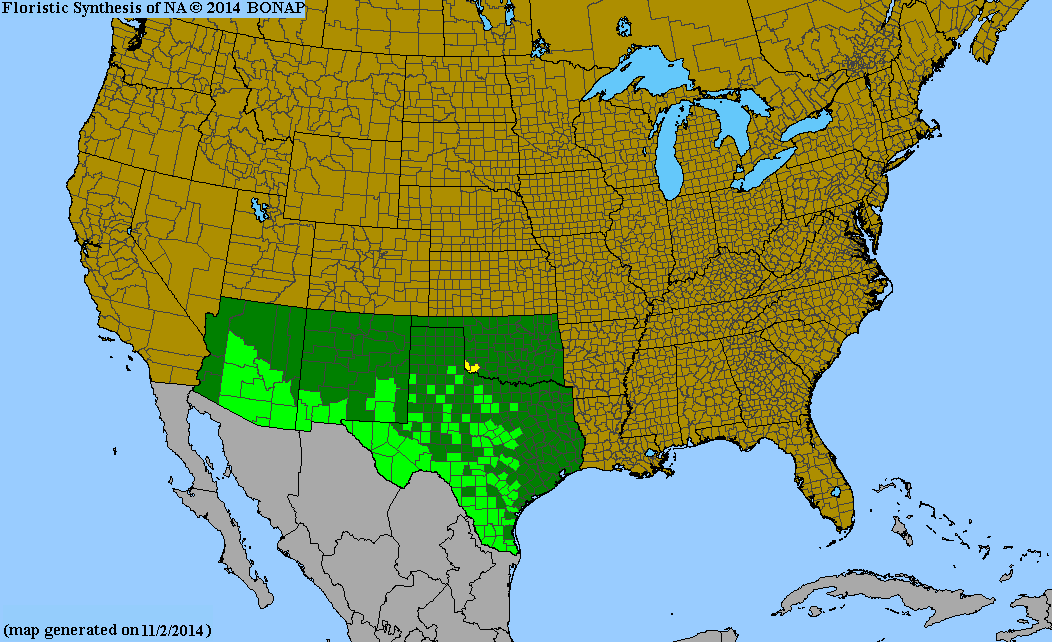 Map Color Key Map Color Key |
Texas Status: Native |
Banner photo of Castilleja indivisa and Lupinus ssp. taken along FM 1323 north of Johnson City, Blanco County
© Tom Lebsack 2025
Every attempt is made to provide accurate, up-to-date, and relevant information, but the completeness or accuracy of any information presented on this website cannot be guaranteed. I use authoritative references to insure high standards of accuracy and review and update the information frequently.
